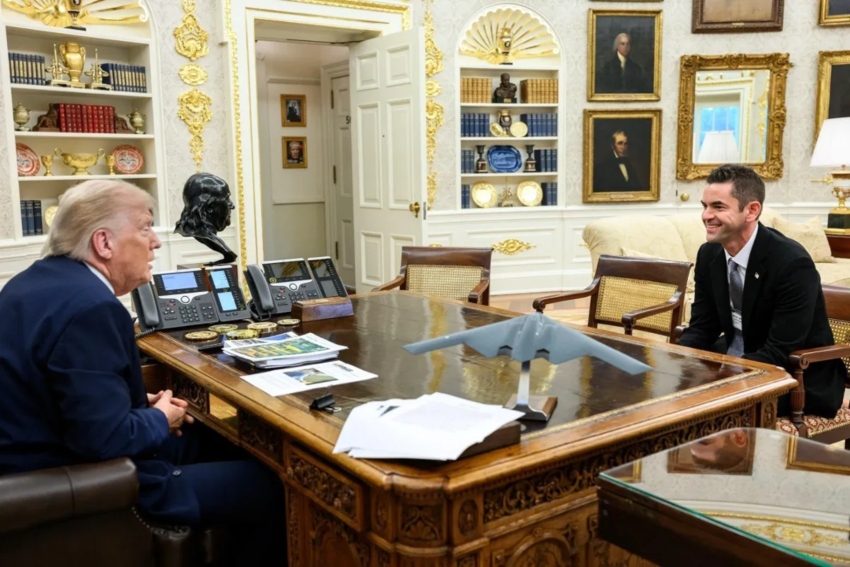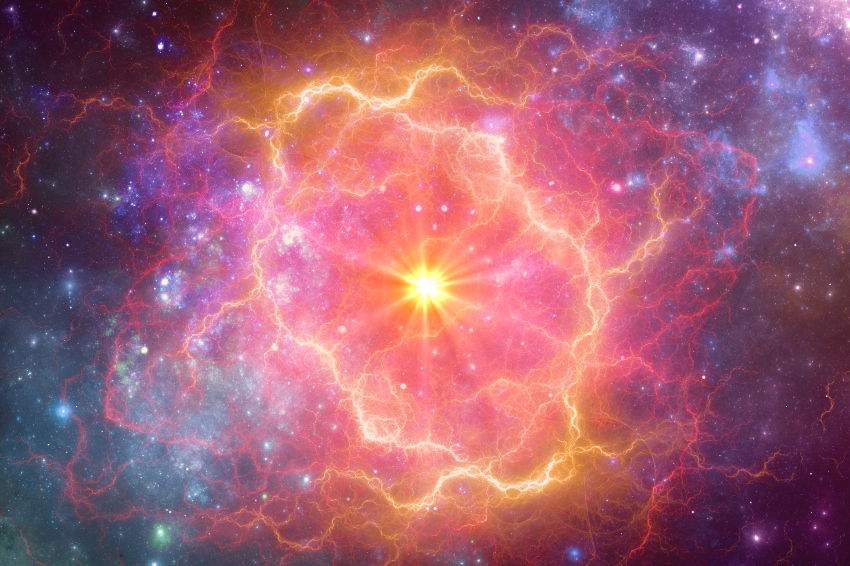Changes at the Helm of NASA: This Week in Space
The U.S. President reintroduces a previously rejected candidate to head the space agency, a first step toward a private space station, delays aboard China’s space station, and a debate over the expansion of the universe. This Week in Space

11 November 2025
|

12 minutes
|
How the Wheel Turns
U.S. President Donald Trump has once again nominated private astronaut and tech billionaire Jared Isaacman to serve as NASA Administrator. The announcement came five months after the president himself withdrew Isaacman’s earlier nomination.
Isaacman, 42, is the founder and CEO of the online payment company Shift4. A licensed private pilot, he became a private astronaut in 2021 when he financed and commanded the Inspiration4 mission, in which four civilians spent three days orbiting Earth aboard a SpaceX Dragon capsule. He returned to space last year as commander of Polaris Dawn, becoming the first private astronaut to conduct a spacewalk outside a spacecraft. Although privately funded, the mission was managed like any other professional mission and included many scientific experiments. It is intended as the first of three missions in Isaacman’s and SpaceX’s Polaris program.
A major SpaceX customer, Isaacman has personally funded two Dragon missions and plans two more, including one on Starship. Trump and SpaceX CEO Elon Musk—who early in Trump’s current term headed the Office of Government Efficiency—originally put forward Isaacman’s nomination for NASA chief. The move drew controversy over potential conflicts of interest, given Musk’s extensive NASA contracts and his close ties to the prospective agency head. Nevertheless, the nomination advanced swiftly through the relevant congressional committees.
Shortly before the final Senate vote, however, Trump unexpectedly withdrew the nomination. At the time, sources within the administration said the president had learned that Isaacman had previously donated to the election campaigns of Democratic Senators Bob Casey of Pennsylvania and Mark Kelly of Arizona (himself a former astronaut), as well as to the California Democratic Party. Isaacman had also contributed $2 million to Trump’s own campaign. Since the withdrawal, NASA has been led by a series of acting administrators; the current acting head, serving since July 2025, is Transportation Secretary Sean Duffy.
Now it seems Trump has changed his mind. Last week he posted on his social platform, Truth Social:
“Jared’s passion for Space, astronaut experience, and dedication to pushing the boundaries of exploration, unlocking the mysteries of the universe, and advancing the new Space economy, make him ideally suited to lead NASA into a bold new Era.”
He offered no explanation for the reversal.
Isaacman, for his part, expressed no resentment, posting on X (the Musk-owned platform):
“Thank you, Mr. President, for this opportunity. It will be an honor to serve my country under your leadership.”
He added that he had received strong support from the space-enthusiast community and pledged:
“I will do everything I can to live up to those expectations.”
Duffy, who had reportedly hoped for a permanent appointment at NASA, appeared to concede the post, tweeting on X:
“Congratulations to Jared Isaacman. I wish him all the success and will ensure the transition is seamless.”
Isaacman’s renewed nomination must again pass through the full confirmation process, though it is unclear when that will begin. The proceedings are likely to be delayed by the ongoing U.S. government shutdown. With NASA lacking a permanent administrator for nearly a year and facing deep budget cuts, the agency seems set to remain in this uncertain state for several more weeks.

Together again? Isaacman with President Trump in the Oval Office, White House | Photo from Isaacman’s X account, X @rookisaacman
En Route to a Private Space Station
The American company Vast, a leading contender in the race to launch the world’s world’s first private space station, took an important step this week with the launch of a satellite designed to test several of the technologies planned for its upcoming station. The satellite, named Haven Demo and weighing about 515 kilograms, was launched Sunday aboard a SpaceX Falcon 9 rocket from Florida as part of the Bandwagon-4 mission. The flight also carried satellites from South Korea, Turkey, the United Arab Emirates, and a small weather-forecasting satellite from the U.S.–Israeli company Tomorrow.io.
Vast plans to launch its first space station, Haven-1, as early as next year. The compact, single-module outpost will ride to orbit on a Falcon 9 rocket. Cylindrical in shape, it measures 10 meters long and 4.4 meters wide, with about 45 cubic meters of habitable space – designed to accommodate a crew of four on two-week missions in low Earth orbit. During that time, the crew will rely on the resources of the Dragon spacecraft, which will ferry them to the station and remain docked throughout the mission.
The station will be equipped with large solar arrays capable of generating ample power for onboard experiments. It will also feature an independent propulsion system, enabling it to perform orbital adjustments and emergency maneuvers without relying on an external spacecraft.
Haven Demo achieved mission success after deploying from SpaceX’s Bandwagon-4 flight on Nov 2, 2025. Following nominal separation and stable sun-pointing, the spacecraft captured 4K video of its solar array deployment and is power-positive. 🇺🇸 pic.twitter.com/rlGBjZVi4S
The demonstration satellite launched this week is designed to test several technologies that will later be used on the station. After successfully deploying its solar panels, the mission will evaluate power generation, propulsion systems intended for the station, attitude control mechanisms, and other key subsystems. Meanwhile, Vast continues work on the station itself; last week, the company completed pressure-resistance tests at its Mojave Desert facility in California.
Building on the experience from Haven-1, Vast plans a much larger space station composed of eight modules—each roughly the size of Haven-1—along with a central, larger module intended for launch aboard Starship. Together, the modules will form a complex capable of supporting up to twelve crew members on long-duration missions.
Alongside Vast, several other companies are racing to develop the first commercial space station. These include Axiom Space, which holds a NASA contract to build the International Space Station’s successor; Blue Origin and Sierra Space, collaborating on Orbital Reef; and Airbus and Voyager Space, partners on Starlab.
A safe haven in the sky — a short tour of Vast’s Haven-1 space station, scheduled for launch in 2026:
Crowded, but with Wings
A crew of three astronauts arrived at China’s Tiangong space station late last week for the Shenzhou 21 mission, which is expected to last six months. The outgoing Shenzhou 20 crew was scheduled to depart the station last Wednesday after several days of handover, but China’s space agency decided to delay their return over concerns that their spacecraft may have been damaged by space debris.
“The Shenzhou-20 crewed spacecraft is suspected to have been hit by small space debris and is currently undergoing impact analysis and risk assessment. In order to ensure the astronauts’ life, health, and safety, and to guarantee the complete success of the mission, it has been decided, after study, that the Shenzhou-20 return mission originally planned for November 5 will be postponed,” the China Manned Space Agency (CMSA) said in a post.
The departing crew will, at least, have one unexpected perk during their extended stay: a revolutionary new addition brought by the arriving team – an oven. Cooking and baking in space are complex and potentially dangerous, so astronauts have typically avoided them, relying instead on reheated, pre-cooked meals that often require only the addition of water.
On Earth, hot air rises, creating natural convection inside an oven. In microgravity, however, this process doesn’t occur — hot air lingers near the heating element while the rest of the oven remains much cooler. When astronauts aboard the International Space Station once attempted to bake cookies that normally take 18 minutes on Earth, they needed nearly two hours in space — and still ended up with half-baked dough.
Fans can solve part of this problem by circulating air inside the oven, but heat distribution isn’t the only challenge. Roasting and baking produce greasy smoke that can contain toxic compounds. In microgravity and within a sealed environment, filtering that smoke is far more difficult, and stray particles could endanger crew health or damage sensitive station equipment.
The Chinese oven installed aboard Tiangong features a full air-circulation, filtration, and purification system that uses a catalytic converter—similar to those that reduce air pollution in car exhaust. After installing the device, the astronauts unpacked seasoned chicken wings, skewered them, and placed them in the oven. Twenty-eight minutes later, for the first time, astronauts enjoyed freshly roasted food with an enticing aroma — cooked in space.
Cooking in orbit is more than a novelty. One of the key missions of modern space stations is to develop technologies for long-duration, deep-space missions, such as a lunar base or crewed flights to Mars. Research shows that cooking in space not only better preserves the nutritional value of food but also boosts astronauts’ mental well-being and appetite through the sensory experience of fresh meals.
Cooking in space is more than a showpiece. One of the key missions of modern space stations is to develop technologies for long-duration, deep-space missions, such as a lunar base or crewed flights to Mars. Research shows that cooking in space not only better preserves the nutritional value of food, but that freshly prepared meals — with their smells and flavors — also contribute to astronauts’ mental well-being and appetite.
The mesh rack wasn’t designed to let juices drip — it was there to keep the wings from floating around the oven. Roasting wings and other delicacies aboard China’s space station:
Several Interesting Launches
India launched a massive communications satellite last week, intended for use by its naval forces. The satellite, GSAT-7R, weighing 4.4 tons, was launched aboard an LVM3 rocket from the Satish Dhawan Space Centre in southeastern India. It will enter geostationary orbit, nearly 36,000 kilometers above Earth, where most communications satellites reside. This marks the eighth launch of India’s heavy-lift rocket since 2014, maintaining a 100% success rate so far. According to The Times of India, the satellite “will provide real-time communications for naval operations, air defense and strategic command control across a wide oceanic and terrestrial region.”
Meanwhile, France’s Arianespace launched the Sentinel-1D radar satellite – the fourth in the European Copernicus program for monitoring environmental changes. The satellite, weighing more than two tons, was launched aboard an Ariane 6 rocket from the European Spaceport in French Guiana. This was the fourth flight of the Ariane 6, which entered service last year. Sentinel-1D orbits Earth in a polar orbit at an altitude of 700 kilometers and is expected to operate for seven years. The Sentinel constellation supports the monitoring of events such as floods, ground-level changes, and glacier melting, as well as improving maritime traffic management and preventing vessel collisions.
China also launched a military radar satellite, Yaogan 46, this week. It lifted off aboard a Long March 7A rocket from the Wenchang Space Launch Center into a medium Earth orbit more than 2,000 kilometers above the surface. According to official Chinese reports, the satellite will be used for weather forecasting and disaster management, though it is widely believed to have additional, undisclosed military purposes.
Over 4,400 kilograms — the launch of India’s heaviest communications satellite:
Which Way Is the Universe Expanding?
More than a century ago, astronomer Edwin Hubble discovered that our universe is not static but constantly expanding. In the late 1990s, two research teams — one led by Saul Perlmutter at the University of California, Berkeley, and the other by Brian Schmidt at the Australian National University — found that not only is the universe expanding, but that the rate of expansion is accelerating. This groundbreaking discovery earned them the 2011 Nobel Prize in Physics.
Since then, the understanding that the universe is expanding at an accelerating rate has become widely accepted within the scientific community. However, physics has struggled to find a satisfactory explanation, prompting theories such as the existence of dark energy — a mysterious force thought to drive the acceleration.
But how do we measure the expansion of the universe when we’re inside it and can observe only a limited portion of it? The standard method relies on supernovae — colossal stellar explosions that can shine as brightly as an entire galaxy.
A particular type of supernova, known as Type Ia, is considered a “standard candle” in astronomy. Researchers assume that the light intensity of these explosions is fairly uniform, so if one appears dimmer than another, it must be farther away — allowing astronomers to use them to calculate cosmic distances. By measuring changes in the color of a supernova’s light, scientists can determine how fast it is moving away from us through the redshift effect observed in rapidly receding objects. This is precisely the method used by Perlmutter, Schmidt, and their colleagues.
However, not everyone agrees with the basic assumption that Type Ia supernovae are truly uniform — and therefore not everyone agrees with the conclusions about the universe’s expansion.
This week, researchers from South Korea published a paper suggesting exactly that possibility. They argue that while the universe is expanding, the rate of expansion may actually be slowing down, not speeding up. The team, led by Yang Wook Lee of Yonsei University, analyzed 300 Type Ia supernovae and found significant variations in their brightness, which they claim depend not only on distance but also — and more importantly — on the age of the progenitor star.
“Our study shows that the universe has already entered a phase of decelerating expansion at the present epoch and that dark energy evolves with time much more rapidly than previously thought,” Lee said. “If these results are confirmed, it would mark a major paradigm shift in cosmology”
According to the researchers, their findings align with recent results from the U.S. DESI Sky Survey, which reported a few months ago that dark energy appears to be weakening.
Still, the cosmology community is treating the claim with skepticism.
“The conclusion — if correct — is certainly interesting,” said Prof. Avishay Gal-Yam, a supernova researcher at the Weizmann Institute of Science, speaking to the Davidson Institute. “But first we need to understand how solid the claim really is — that there’s such strong evolution in the properties of supernovae based on the system’s age, and that younger, more distant ones behave differently. This issue has been studied since the 1990s, and no previous results have found such a strong effect. Scientifically, I can’t yet say whether this work is flawed or whether they’ve truly found something everyone else missed.”

Does the age of the exploding star really affect what we know about the universe’s expansion? Illustration of a supernova explosion | Artwork by Martin Capek, Shutterstock




